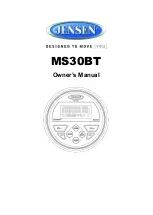
Features
12
The OpenCom 100 can be integrated into an existing network (LAN) and be used
by all workstations as an Internet access router and mail client.
Configuration and programming of the OpenCom 100 is performed by means of a
special Web browser (known as the “Web console”), which can be run on a con-
nected PC.
The OpenCom 100 can also be configured at the customer service centre and
maintained by means of remote configuration.
A PC can be connected via a retrofitted V.24 interface card to the COM port for the
purpose of configuring the system or transferring connection data.
To connect the OpenCom 100 to existing company hardware, “actor” ports
(output) and “sensor” ports (input) can be provided by retrofitting a doorstation
interface card. For example, this can be used to operate a door opener and a
doorbell via the system (this requires additional equipment).
There are two variants of doorstation equipment interface cards:
■
On an OpenCom 130 or an OpenCom 131 a “M100-TFE” interface card can be
operated. This card provides two actor ports and three sensor ports to connect
doorstation equipment.
■
On an OpenCom 150 a “M100-TFE-2” interface card can be operated. This card
provides four actor ports and four sensor ports. This card enables to operate
two entrance intercom systems, each providing two sensor ports for bell keys.
The OpenCom 100 allows you to use CTI (
C
omputer
T
elephony
I
ntegration) appli-
cations made by other manufacturers. This requires installation of a TAPI driver on
a Windows PC (see
Setting up TAPI
starting on page 160). The OpenCom 100 also
has an integrated dialling wizard: the OpenCTI 50. Via the OpenCTI 50 users can
call up and use telephone functions on PCs without first having to install a special
TAPI driver.
The OpenCom 100 complies with the regulations for telecommunications
equipment. The DSS1 protocol is implemented.
Packet data in the D channel
Some business applications, for instance POS terminals, cash registers or credit
card terminals, require a permanent data connection over the X.25 packet data
network. Packet data transfer through the ISDN D channel (according to X.31 via
Summary of Contents for OpenCom 130
Page 1: ...130 OpenCom100 131 150 Mounting and Commissioning User Guide ...
Page 10: ...8 ...
Page 202: ...Index 200 Notes ...
Page 203: ......















































